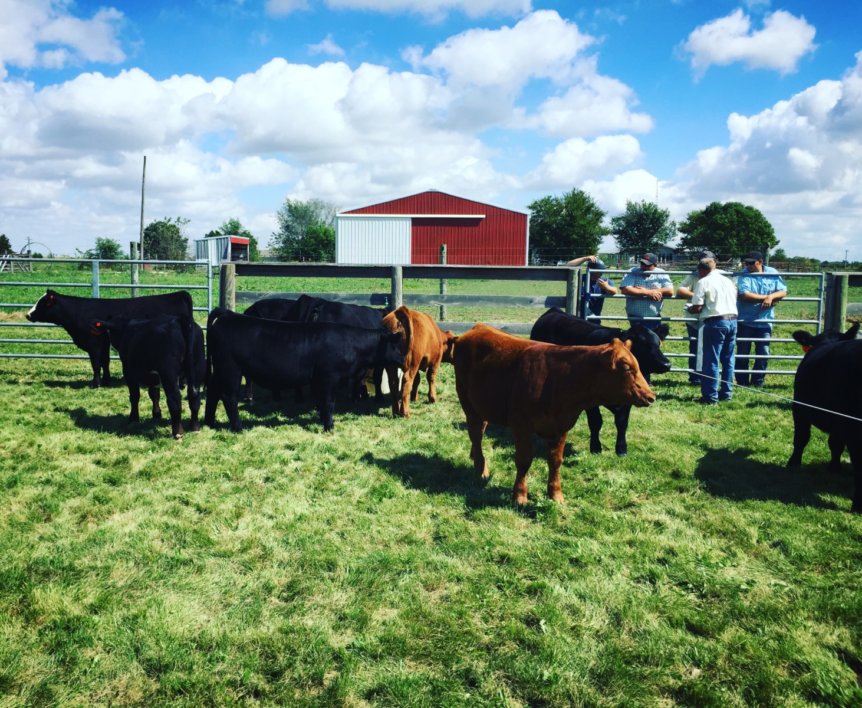What is a Grazing Lease?
A grazing lease is an agreement between a landowner (the “lessor”) and a livestock owner (the “lessee”) where the landowner agrees to let the livestock owner graze livestock on his or her land in exchange for cash rent. Given the number of potential factors at play, a grazing lease agreement can quickly turn into a complicated affair. Below is a list of seven issues that the lessor and lessee will want to address in their grazing lease agreement.
- The Basics: Who? What? When? How much?
Every lease agreement must answer four basic questions: Who? What? When? And how much? A grazing lease is no exception. It should identify by name and address the two (or more) parties to the agreement, i.e., the lessor and the lessee. It should describe the land to be leased as precisely as possible, including the mailing address or other common description, the legal description, and the total acres. The agreement should explain how long the lease will run, whether annually or otherwise. Finally, it should clearly state how much rent the lessee will owe the lessor, as well as the interval of time at which such payments will be due.
- Limitations on Livestock
Depending on the nature of the land to be leased, including total forage production, it may be in the landowner’s interest to include stocking limitations in the lease agreement that specify the total number of animals or animal units (i.e., pounds of animal weight) that the lessee can keep on the land at any given time. If the landowner also wishes to permit only certain types of livestock to graze on the land, that should also be stated in the lease agreement.
- Exclusivity and Right of Entry
A grazing lease should discuss the landowner’s right of entry onto the leased land during the lease, including whether the right is limited to certain purposes, as well as whether the landowner must inform the lessee before entry. If the grazing lease is not exclusive, that is, if the landowner has also leased the land to another party for another purpose, that fact should be disclosed in the written agreement.
- The Allocation of Responsibilities
Throughout the course of a grazing lease term, there is bound to be disagreement between the parties concerning who is responsible for certain undiscussed circumstances. To avoid conflict, a grazing lease can clearly address which party is responsible for certain issues, including: upkeep and repair of fences, windmills, and pumps; provision of water for the livestock; provision of additional feed for the livestock, if needed; and the supervision of the property for hazards such as wildfires.
- The Lessee’s Privileges
A lessee will want to know what privileges he or she may expect while leasing the land. A grazing lease should specify whether the lessee is permitted to use the land for any use other than grazing. It should list any facilities on the property, such as barns, corrals, or sheds, that the lessee is allowed to use. It should also express any limitations on the lessee’s vehicle use, such as areas where vehicle use may or may not be permitted, as well as the types of vehicles—such as recreational vehicles—that may or may not be used.
- Circumstances Leading to Termination
A grazing lease should clearly lay out the circumstances leading to the termination of the agreement, as well as whether any party is owed any monetary damages or refunds as a result of such termination. The parties may wish to include provisions for the lease to terminate automatically upon the occurrence of certain events, such as the expiration of a certain amount of time, the failure of a party to follow the terms of the lease, the sale of the underlying property, the occurrence of a natural disaster, or the death of a party.
- Limitations on Liability
While ideally there would be no reason to address the issue of liability, it is always wise to include express limitations on liability in a lease agreement. A grazing lease should clearly state that a lessee is solely responsible for his or her activities, as well as any injury or damages resulting therefrom, while on the leased land. A strong grazing lease will also include provisions for indemnification and assumption of risk, and may further require that the lessor or lessee (or both) purchase or provide proof of an insurance policy that covers reasonably foreseeable loss.
Whether you are a landowner planning to lease your property for grazing purposes, or whether you are a livestock owner hoping to lease land, it is important to understand that lease agreements are binding and complex contracts with significant consequences. If you are seeking assistance with drafting a grazing lease that meets your needs and protects your rights as a lessor or lessee, contact our law office and schedule a consultation.

